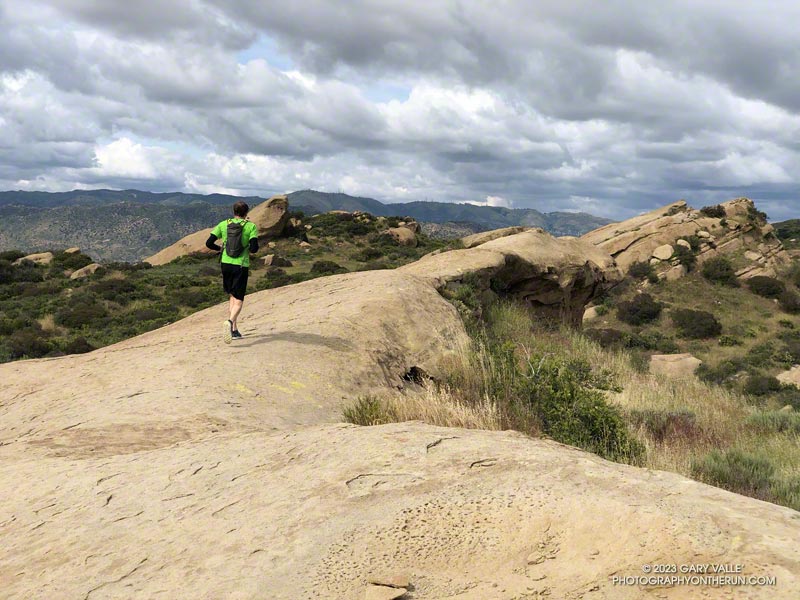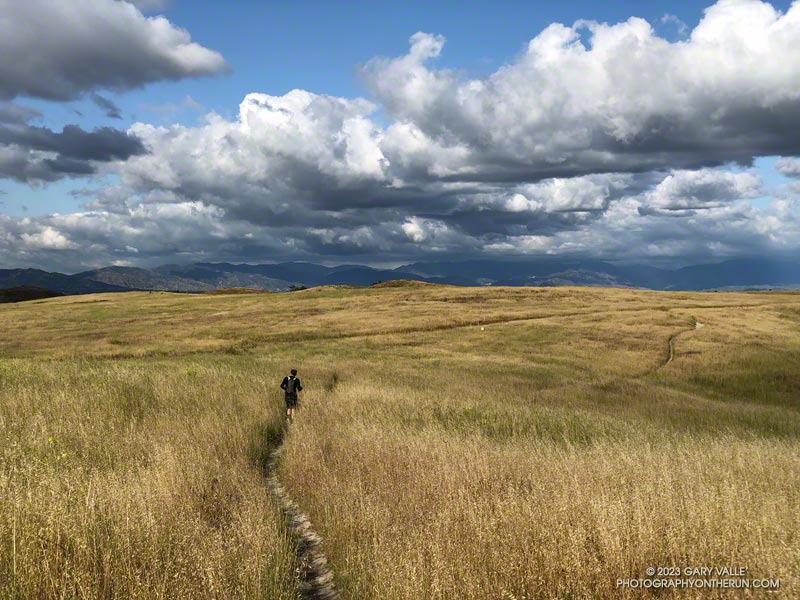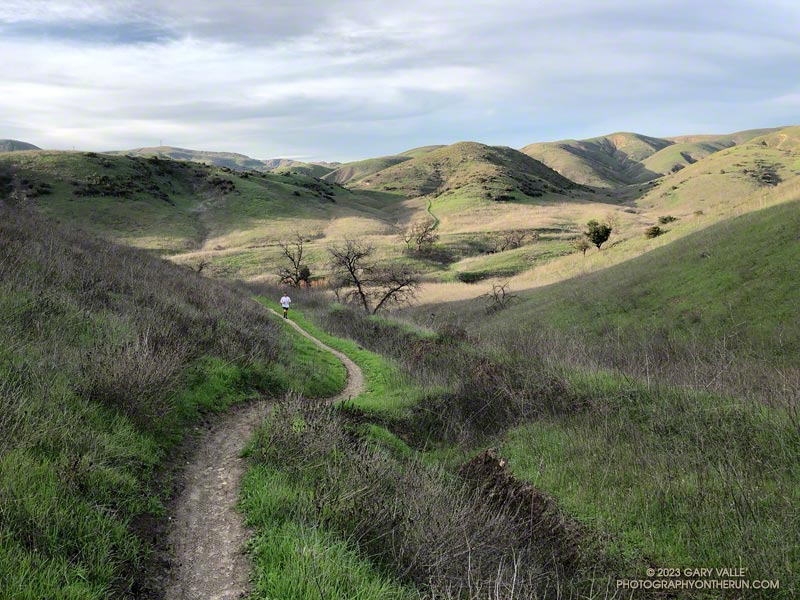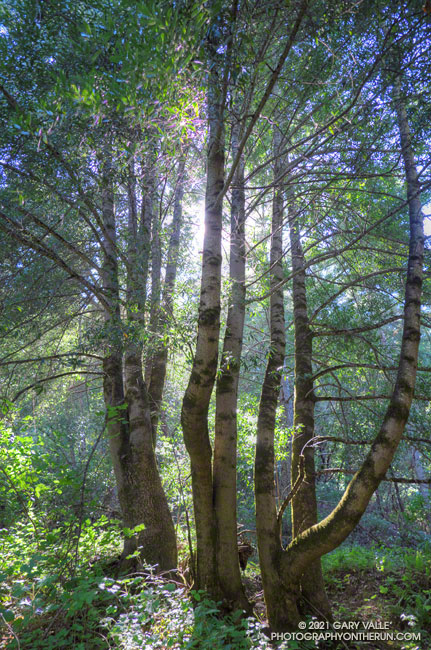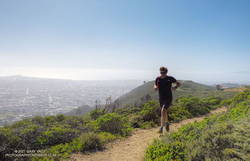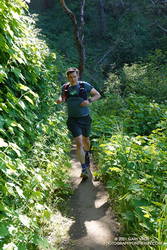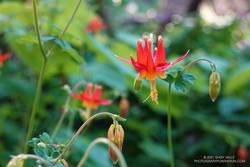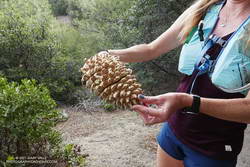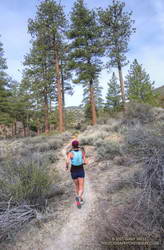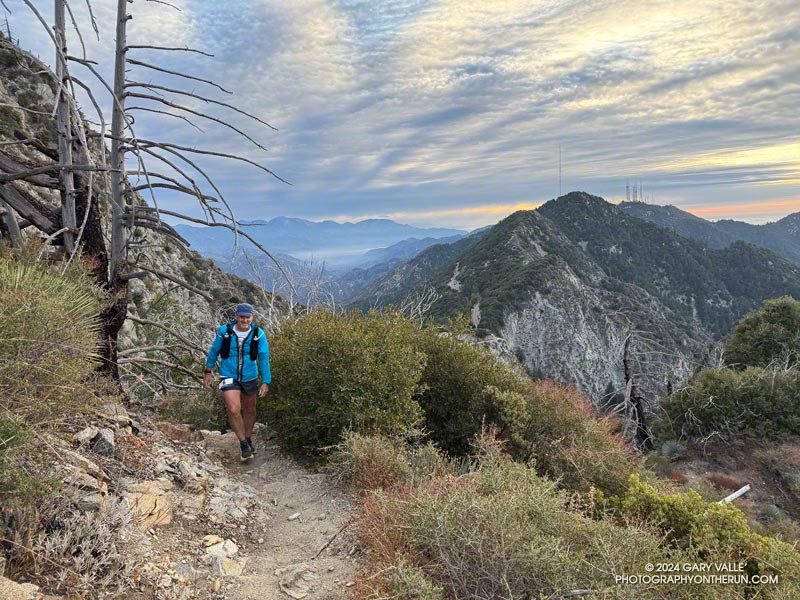
Update February 21, 2025. Full resolution photos from the race, courtesy of Chris Goddard. Thank you Chris!
Even in Southern California the weather can be a little fickle. Just two weeks ago, heat had been one of my concerns for the No Name 50K. During that race the temperature reached into the mid-80s. Heat definitely wasn’t an issue for this morning’s race on Mt. Wilson. Several days out one computer model had forecast sleet and a temperature of 32°F! Instead, at the start of the race runners were treated to a spectacular sunrise and a temperature of around 40°F.
After a five year hiatus, the Angeles National Forest (Mt. Disappointment) Trail Race is back. Started in 2005 by R.D. Gary Hilliard, this was the 14th running of the highly regarded event. Today we ran the 25K course, but in 2025 a 25K and 50K will be offered.
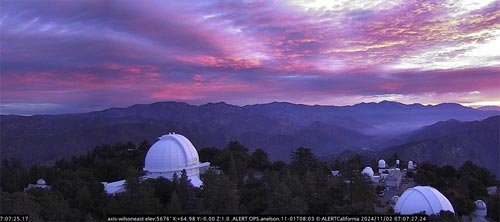
Whatever the distance, a hallmark of any ANFTR/Mt. Disappointment courses is that it starts and ends on top of Mt. Wilson (5739′). While not particularly high, the altitude is just high enough to take the edge off a runner’s performance. Many a runner has underestimated the difficulty of the final five-mile climb from West Fork to the top of Mt. Wilson — especially on a hot day in July or August.
My race went well, and I left enough in the tank to enjoy the climb up the Kenyon Devore Trail!
Thank you Gary and Pam for your dedication, passion, and the hours and hours of work required to put on a quality event! And thanks also to all the volunteers, runners, and others that support the race.
Here’s a high-resolution, interactive, 3D-terrain view of the ANFTR/Mt. Disappointment 25K course.
All the results from 2005 to 2024 are available on UltraSignup.
Next year, Jakob Herrmann will be taking over the reins of the event. The race is on Saturday, September 27, 2025, and registration for the 25K and 50K is already open.
Some related posts:
– A Morning Thunderstorm, Debris-Covered Trail, Fast-Paced Fire Road, and Tough Climb on the ANFTR 25K Course!
– Another Scorching Angeles National Forest/Mt. Disappointment Trail Race

